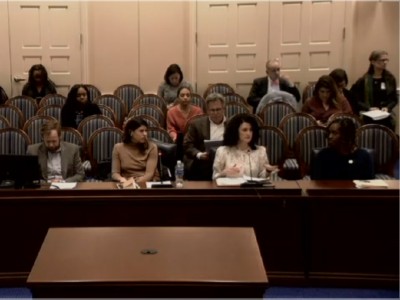The 441st Session of the Maryland General Assembly came to an abrupt close on Wednesday, March 18, 2020. As Maryland and the rest of the nation grappled with the outbreak of COVID-19, leaders in Annapolis decided to adjourn the legislative session early – something only done once before 159 years ago, on the eve of the American Civil War.
From the start of the legislative session in January, Preservation Maryland and Smart Growth Maryland had been on the ground in Annapolis advocating for the pro-preservation and pro-smart growth policies that will help save thousands of historic buildings and acres of open space. Over the past several years of our increased presence in Annapolis and ramped-up advocacy efforts, we have sustained ourselves as the leading voice for preservation, but this year, we faced our biggest challenge to date.
With the final three weeks of session compressed into four days, Preservation Maryland worked to make sure that a number of our priority bills moved through the legislative process before Session came to a close.
- Preservation Maryland Executive Director, Nicholas Redding (second from L) testifies beside bill sponsor, Sen. Katie Fry Hester (L) on historic tax credits, Annapolis, MD, 2020.
- Preservation Maryland Director of Advocacy Elly Cowan at a hearing for HB862 in Annapolis, MD, 2020.
The General Assembly hopes to reconvene in May for a special session, but they will only be taking on emergency legislation and veto overrides. Staying engaged over a typical Session requires dedication, partnerships, and significant resources, and with the new challenges we are facing, there is still much work to do. Preservation Maryland is dependent on donor contributions to keep us on the ground in our state’s capital making the case for preservation.
Advocacy Successes
Although faced with adversity, Preservation Maryland was able to succeed in passing a number of our legislative priorities, including:
State Historic Revitalization Tax Credit
In recent years, Preservation Maryland, our colleagues, and advocates have worked diligently to make policy changes to strengthen, the State Historic Tax Credits, an essential redevelopment program. This year, we were successful in passing the legislation a simpler method for transferring the credit, which will help encourage investment in community revitalization projects across the state. Thanks go out to Delegate Stephanie Smith (Baltimore City) and Senator Katie Fry Hester (Howard/Carroll County) who introduced this legislation. We were also able to pass legislation that makes the Small Commercial Tax Credit available to use for the common elements of historic condominium buildings thank to the support of bill sponsor, and chair of the House Appropriations Committee, Delegate Maggie McIntosh (Baltimore City).
CRITICAL FUNDING FOR PRESERVATION PROJECTS
Legislative Bond Initiatives, formerly known as bond bills, have the potential to impact a wide array of preservation projects around the state. Thanks in part to our advocacy, several of our Six-to-Fix projects received such funding:
Jonathan Street Revitalization
As a result of the efforts of Sen. Andrew Serafini (Washington County), Preservation Maryland will receive a grant for $250,000 for the acquisition, planning, design, construction, repair, renovation, reconstruction, site improvement, and infrastructure improvements in the historic African American Jonathan Street neighborhood in Hagerstown, Maryland.
Annapolis City Dock
The City Dock Action Committee’s recently released plan “Transforming City Dock” named the restoration of Burtis House as one of the priorities to preserve and maintain downtown Annapolis’ maritime heritage, character, and viewsheds. Thanks to the support of Sen. Elfreth (Anne Arundel County), Preservation Maryland will receive a grant of $75,000 for the rehabilitation of Burtis House in its historic waterfront location at the end of City Dock.
Historic Orchard Street Church
Preservation Maryland has been working closely with the Greater Baltimore Urban League, a civil rights organization, to restore their headquarters, the historic Orchard Street Church in Baltimore City, which has its own long history of community engagement including hosting abolitionist meetings. The Greater Baltimore Urban League will receive $300,000 to help rehabilitate the church.
Heritage Tourism Areas
Program Open Space is most often associated with the preservation of agricultural and natural landscapes, but the program also invests millions of dollars in protecting cultural landscapes and historic buildings, as well as providing dedicated funding for the state’s twelve Heritage Areas for targeted heritage tourism efforts. Preservation Maryland supported full funding of Program Open Space and the Heritage Area program.
We will continue to monitor this program as it will be under threat in difficult fiscal years ahead as Maryland moves to recover from the economic downturn as a result of COVID-19.
SUPPORT PRESERVATION MARYLAND’S EFFORTS



